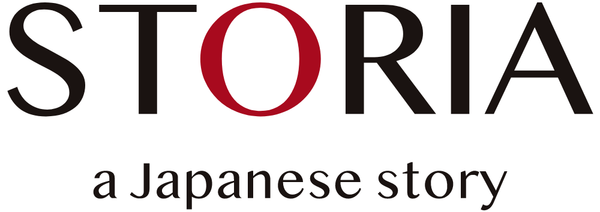“Washiya Sugihara Shoten” a washi wholesaler was established in 1871 in Echizen, a town known as the largest producer of washi in Japan in both quantity and quality. It is Yoshinao Sugihara, who has been leading the company since 2010 as a representative of the 10th generation. Known as the "washi sommelier", he has been exploring the new value and potential of Echizen washi with a flexible approach, while respecting its tradition, and promoting its appeal both in Japan and overseas.
A long-established washi wholesaler with over 140 years of history
Echizen washi has been made in the Echizen region of Fukui Prefecture for over 1,500 years, dating back to a legend that a beautiful princess appeared in the upper reaches of the Okamoto River and taught the art of paper making. Echizen washi has long been known for its beauty and durability, and is of the highest quality.
In this Echizen washi production area, Sugihara Shoten has been in business for generations since the mid-Edo period. Originally a craftsman who made paper, it converted the business to a wholesaler in 1871. The wholesaler business flourished, and before World War II, the company even had its own office in Tokyo.
Yoshinao Sugihara, being in the 10th generation of Sugihara Shoten and as a washi sommelier, coordinates with artisans and designers to widely convey the appeal of washi. Ahead of his peers, he has been promoting the potential of washi in the fields of architecture and art, exhibiting his work at exhibitions in Japan and abroad. His work has been praised worldwide and he has received numerous awards.
In January 2018, Sugihara Shoten renovated a 100-year-old warehouse (Kura) built in the Taisho era and opened a washi gallery and store called Washiya. A variety of washi and original products that Sugihara Shoten has handled are gathered in one place, creating a space where you can see, touch, and feel the appeal of washi.

Pursuing new possibilities of washi as a "washi sommelier"
Although Mr. Sugihara has now expanded his activities internationally, his path was not smooth from the start. When he first joined his family's company in 1988, the demand for fusuma and shoji screens was declining as people's lifestyles changed and Japanese rooms were no longer needed. This was followed by the spread of the Internet and personal computers, which led to a paperless society.
In response to this, he explored new possibilities for washi, aiming to become a washi wholesaler that can make proposals on its own. He developed a range of original products such as inkjet-printer compatible washi called "Habutaeshi" and "Chigitte business cards” that can be easily torn by hand after being folded. Although the products were well received, they did not sell well at first. Therefore, he developed his own new sales routes and gradually expanded his sales channels.
The next turning point came in 2002, when he participated in IPEC, an interior design fair held in Tokyo. At the exhibition, which he participated in without knowing what to expect, he received an encouragement award for his three-dimensional objects and lamps made of Echizen Washi.
Since then, Sugihara Shoten's Echizen Washi works have attracted attention not only in Japan but also overseas, and have been used for window displays at the French perfume store Guerlain, and for decorating the ANA lounge at Haneda Airport, among others.
The efforts of Mr. Sugihara, who continues to evolve ideas with the times while preserving tradition, will continue to invite many people into the profound world of washi.

The appeal of washi interior design
In recent years, the quality of washi paper has been re-evaluated and new demands have been created for its use in interior design. Washi, made from natural materials, is attractive not only for its soft texture, but also because it does not contain any substances harmful to the human body or the natural ecosystem, and can eventually be returned to the soil.
Washi is made from plant fibers, and because each fiber is thick, long, and tightly intertwined, it is tougher and more durable than Western paper, and is said to last 1,000 years if well preserved. In addition, it is said that washi breathes just like human beings, so it can be expected to regulate the humidity in a room.
The soft glow of washi indirect lighting creates a healing space and enhance relaxation.
The products are handcrafted by skilled artisans, reproducing accurately customers' detailed requests. If you are interested in Washi interior design, but don't know what kind of design to choose, or are not sure if it will be exactly as you imagined, why not consult with us?
Born in Fukui Prefecture in 1962. After graduating from the university, he gained experiences at a 350-year-old washi wholesaler before joining his family's company, Sugihara Shoten, in 1988. Since then, he has developed new types of washi that have attracted much attention, including inkjet printer compatible "Habutaeshi" and "Chigitte business card" which becomes the size of a business card when torn by hand. He won the DESIGN WAVE FUKUI Grand Prize for his lacquered washi “Uru Washi”in 2000 and the Encouragement Award at the IPEC interior design fair in 2002. He has been actively participating in exhibitions in Japan, Europe and the United States to show the potential of Washi to the world.
View the works of "Washiya"
